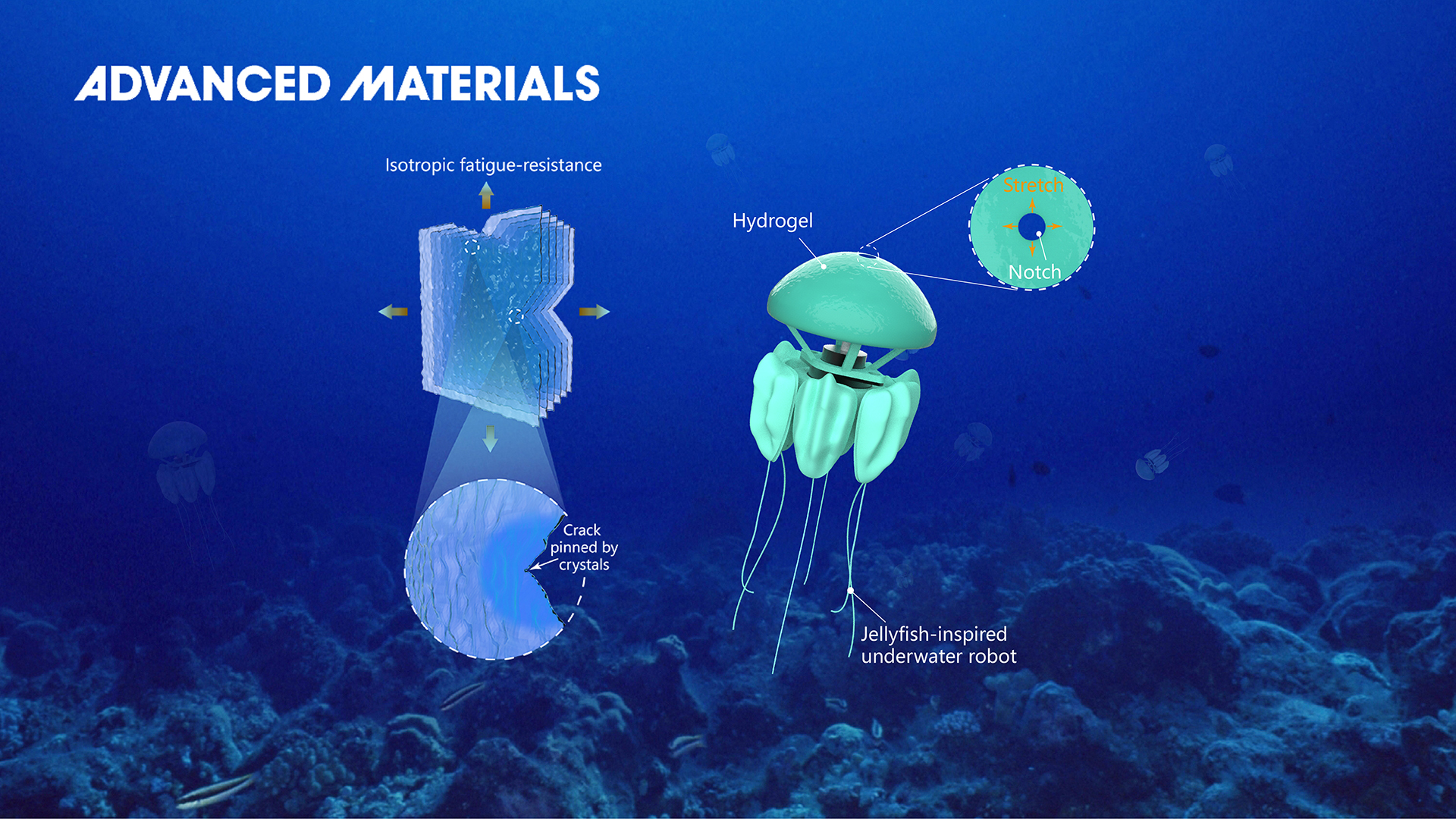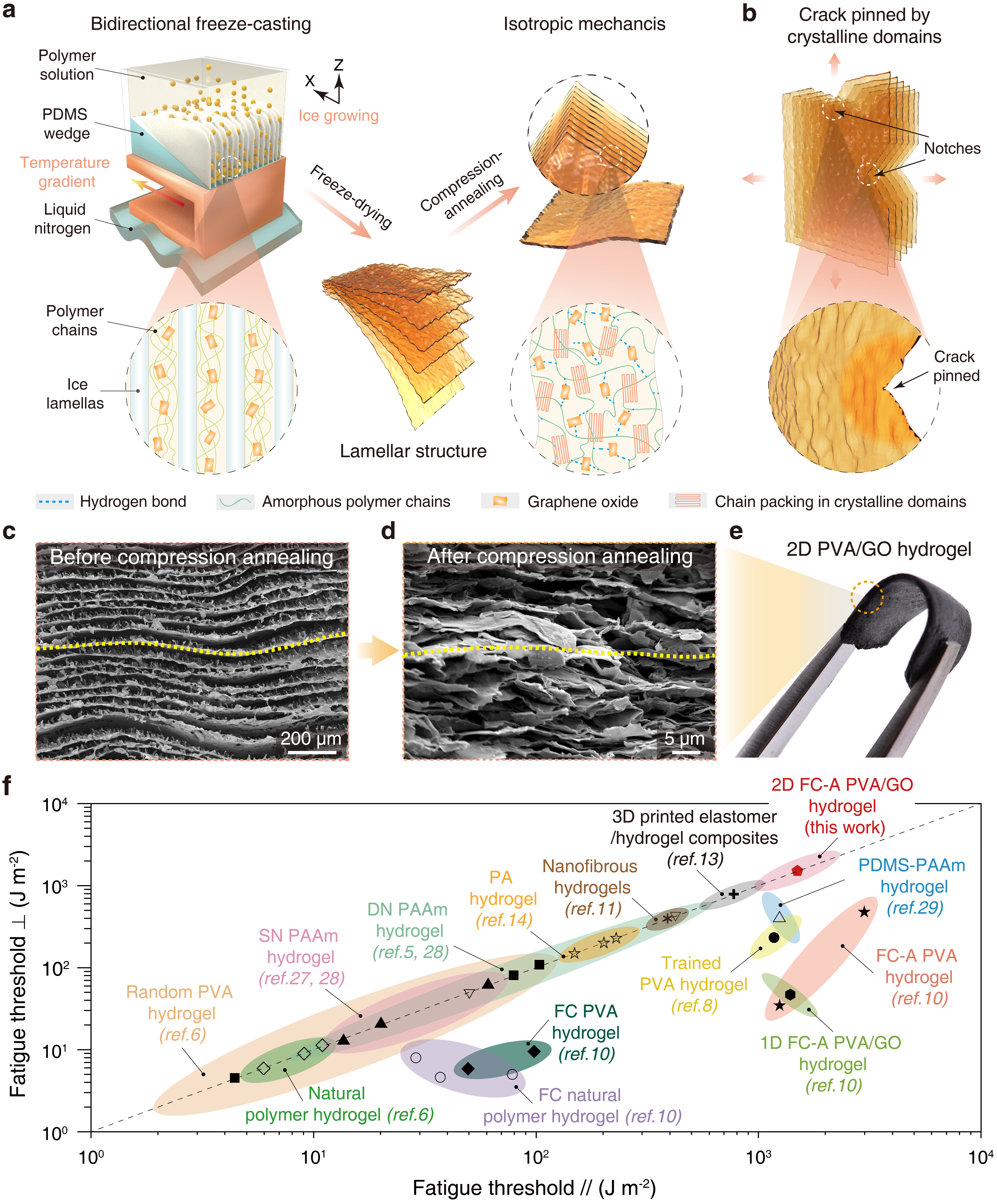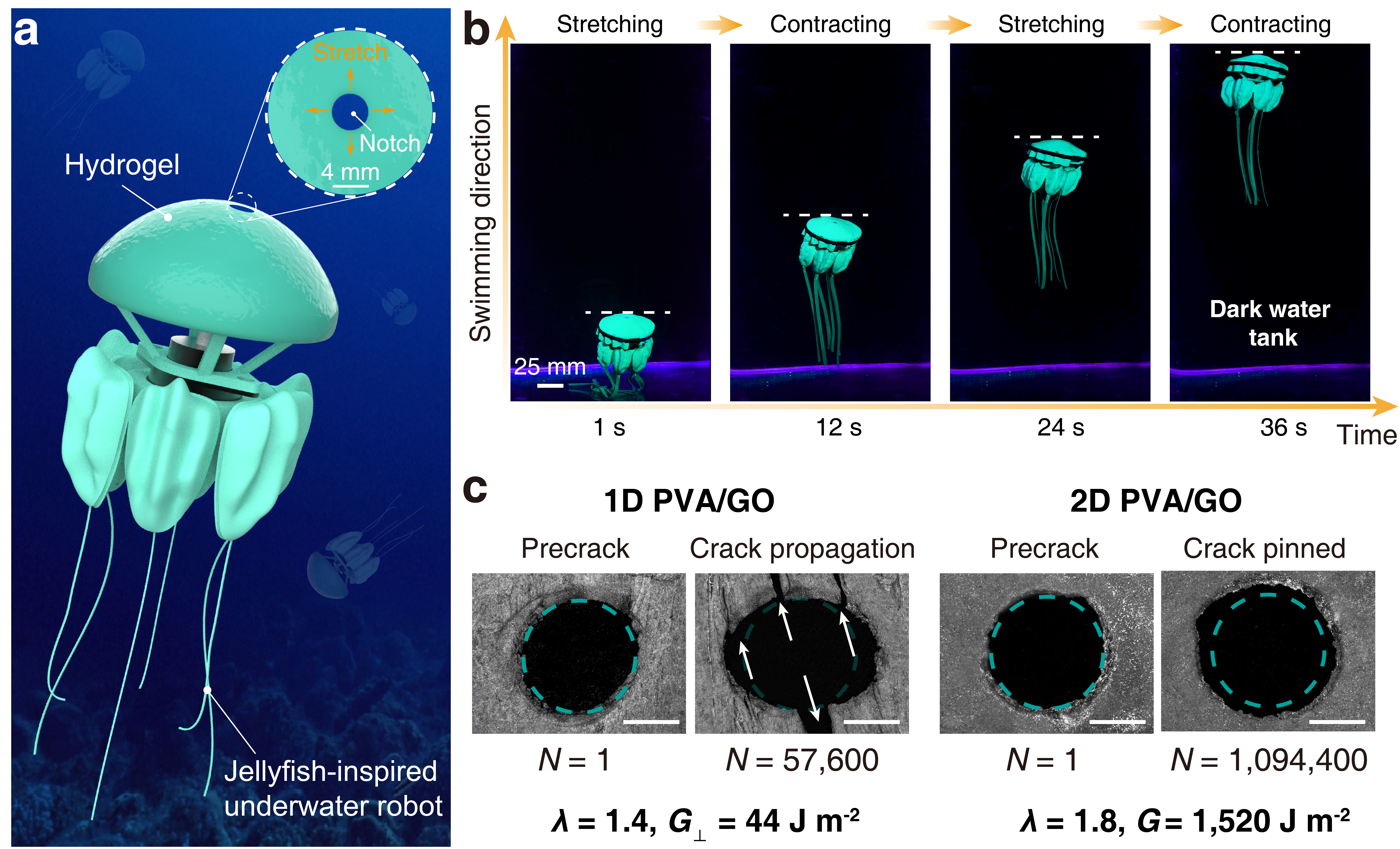Engineering conventional hydrogels with muscle-like anisotropic structures could efficiently increase the fatigue threshold over 1,000 J m−2 along the alignment direction. However, the fatigue threshold perpendicular to the alignment is still as low as 100∼300 J m−2, making them non-suitable for those scenarios where isotropic properties are desired, like soft robotics, flexible electronics, e-skins, and tissue patches.
Associate Professor Ji Liu from the Department of Mechanical and Energy Engineering at the Southern University of Science and Technology (SUSTech), in collaboration with researchers from Massachusetts Institute of Technology (MIT), and University College London (UCL), reported a general yet straightforward strategy to engineer conventional composite hydrogels with a more than 100-fold increase in fatigue thresholds of random directions in 2D plana. This paper, entitled “Bioinspired 2D Isotropically Fatigue-Resistant Hydrogels,” was published in Advanced Materials, a high-profile journal in material science.

Inspired by the unique structure-activity relationship of heart valves, Prof. Liu’s team engineered the preferentially-aligned laminar micro/nanostructures within a hydrogel material through the bidirectional freeze-casting process. This was followed by the compression-annealing process, using the composite material of polyvinyl alcohol (PVA) and graphene oxide (GO) as the exemplary material. As a result, the as-obtained hydrogel possessed a water content as high as 82%, while its fatigue resistance in 2D planar directions reached as high as 1500 J m-2. Similarly, this strategy can be applied to other composite material systems, including alginate/GO, chitosan/GO, and gelatin/GO.

Figure 1. Fabrication of 2D isotropically fatigue-resistant hydrogels and their multi-lengthscale structures.
The capability of conventional composite hydrogels with unprecedented resistance to crack propagation in 2D planar directions during long-term cyclic loads enables applications such as 2D planar load-bearing components in underwater soft robotics (Video 1).
Video 1. Design model of the underwater robot with fatigue-resistant hydrogel as the load-bearing components.
When the laminated PVA/GO hydrogels are loaded with pre-cut crack, no crack propagation was observed over 1,000,000 stretching-and-contracting cycles in 2D plana (at an energy release rate of 1520 J m−2 over 450 h), showing unprecedented fatigue-resistant performance in real application circumstances (Video 2).

Figure 2. Functional demonstrations as load-bearing components for underwater soft robots.
Video 2. Million-cycle validation of fatigue-resistance on an underwater robot.
This work was led by SUSTech, in collaboration with MIT and UCL. Xiangyu Liang, a presidential postdoctoral fellow at SUSTech, is the first author of this paper. Professor Ji Liu is the corresponding author.
This study was supported by the Science, Technology and Innovation Commission of Shenzhen Municipality, the Basic and Applied Basic Research Foundation of Guangdong Province, the Natural Science Foundation of Guangdong Province, and the Natural Science Foundation of Shenzhen Municipality.
Paper link: https://onlinelibrary.wiley.com/doi/10.1002/adma.202107106
Ji Liu’s Group link: https://faculty.sustech.edu.cn/?cat=2&tagid=liuj9&orderby=date&iscss=1&snapid=1
To read all stories about SUSTech science, subscribe to the monthly SUSTech Newsletter.
Proofread ByAdrian Cremin, Yingying XIA
Photo By